
views
Building a Match Rocket
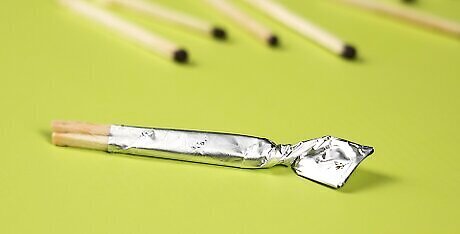
Roll two matches in a piece of aluminum foil. Put two matches on aluminum foil with the plain ends sticking out and the match tips pointing in. Roll the matches up like a burrito. Twist one end of the foil tightly around a match and leave the other end rolled loosely.
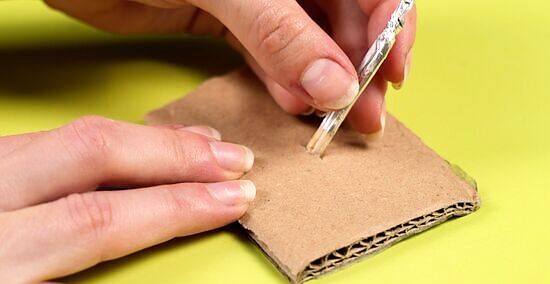
Anchor the matches. Stick the matchstick of the tightly rolled match into a piece of cardboard. This will hold that match in place. Being anchored in the cardboard also allows you to aim the match and launch in whatever direction you choose.

Heat the aluminum foil. Use a candle or lighter to heat the foil. Put the flame directly under the area of foil that conceals the match heads. When the matches get hot enough, they will ignite. This bb will send the loose match shooting out of the aluminum holder. When the match heads ignite, gas is rapidly formed and this expanding gas forces the loose match out of the aluminum holder with a considerable amount of force.
Launching a Rocket with Water and Air
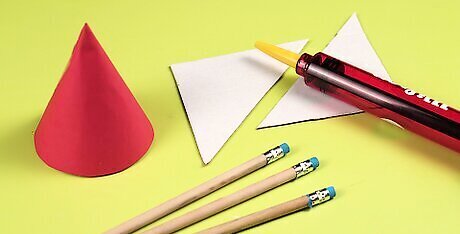
Gather your materials. The body of your rocket will be made from a plastic water bottle, a paper cone, and two paper or cardboard triangles. You will use three pencils to make a stand. You will also need a cork, water, and a bicycle pump to pressurize the bottle.
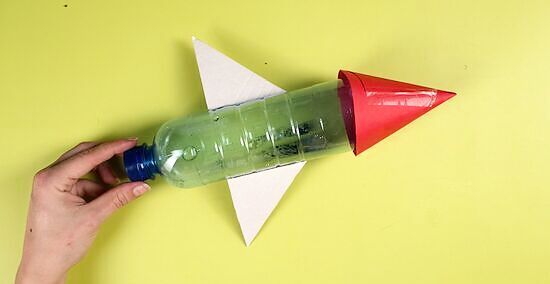
Make a rocket from a bottle. Reduce the drag of the water bottle by taping a paper cone to the top of the rocket (the bottom of the bottle). Tape paper or cardboard triangles on either side of the bottle to act as fins. The triangles should come about halfway up the bottle.

Build a rocket stand. Tape pencils around the sides of the bottle to make a stand. Make sure that the pencils are pointing down. This stand will allow you to point your rocket up (or at an angle if you wish). Without a stand, your rocket will likely just flail around near the ground instead of lifting off.
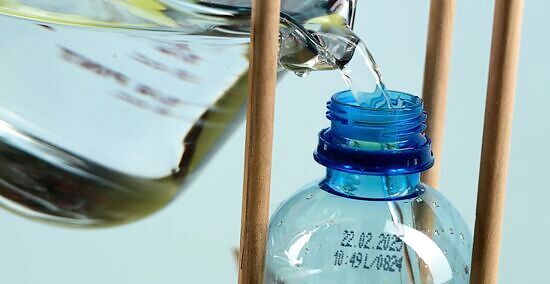
Put water in the bottle. You should fill the bottle half full of water. The water will provide the mass needed to propel the rocket during the launch. You can add food coloring for a colorful blast off.

Cork the bottle. Throw away the bottle’s original cap and replace it with a cork that fits into the opening of the bottle. The cork will allow pressure to build inside the bottle. The cork will also pop out allowing the contents to shoot out rapidly and propel the bottle.
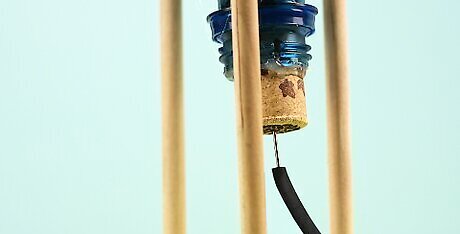
Pump air into the bottle. Use a bicycle pump with a needle. Insert the needle into the bottle through the cork and pump. Once enough air has been pumped into the bottle, the pressure will force the cork out and launch the rocket into the air.
Make a Rocket with Household Chemicals

Tape pencils around a bottle. Make sure that the ends of the pencils come up past the top of the bottle. This will ensure that they touch the ground when the bottle is upside down. The pencils will allow you to stand the bottle up on its top.

Wrap baking soda in a tissue. Put two tablespoons of baking soda in a tissue and roll it up. Make sure that the sides are folded over so that no baking soda is exposed. This will provide a time delay on the very rapid vinegar and baking soda reaction.

Put vinegar in the bottle. Use a funnel to fill the bottle with vinegar. The vinegar is acidic and will react with the basic baking soda to neutralize. Carbon dioxide will be produced in this reaction, which will cause pressure to build inside the bottle.

Insert the baking soda packet. Drop the baking soda packet into the vinegar. From this point forward, you will need to move quickly. The tissue will unravel quickly. The reaction will start as soon as the baking soda comes in contact with the vinegar.
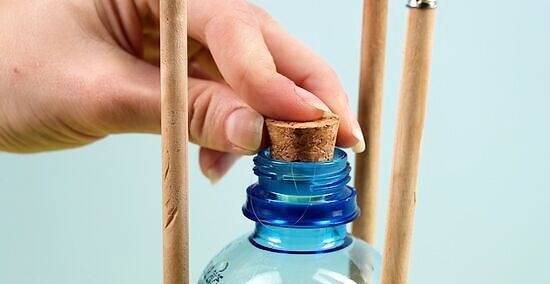
Cork the bottle. Quickly place the cork in the opening of the bottle. This will prevent gasses from leaving the bottle and cause pressure to build. With the cork in, set the bottle upside down on the pencils.
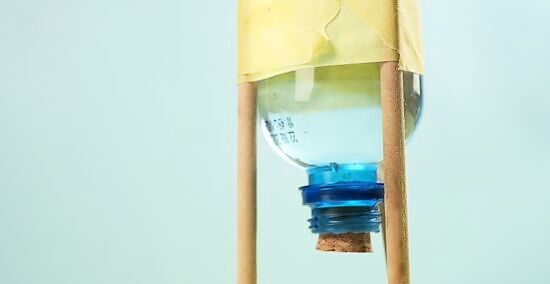
Watch it launch. As the tissue unravels and the baking soda and vinegar react, more and more gas will build inside the bottle. This will force the cork out from the bottom of the rocket. That force will propel the rocket off of the ground and into the air.




















Comments
0 comment